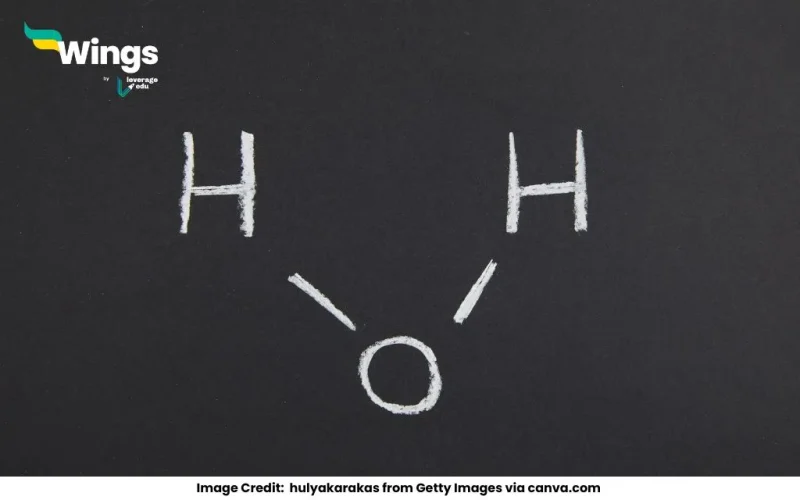To calculate the molar mass of water (H₂O), just add up the atomic masses of hydrogen and oxygen. Each hydrogen atom has a mass of 1 g/mol, and since there are two, that’s 2 g/mol. Oxygen has a mass of 16 g/mol. Add them together: 2 g/mol + 16 g/mol = 18 g/mol. So, the molar mass of water is 18 g/mol.
Complete Answer:
Here is how we calculate the molar mass of water:
Hydrogen (H): The atomic mass of one hydrogen atom is 1.008 atomic mass units (amu).
Since water has two hydrogen atoms, their combined mass is: 2× 1.008 = 2.016 amu
Oxygen (O): The atomic mass of one oxygen atom is 16.00 amu.
Adding the Masses Together
Now, to calculate the total molar mass of a water molecule:
Molar Mass of H₂O=(Mass of Hydrogen Atoms)+(Mass of Oxygen Atom)
Molar Mass of H₂O = 2.016 g/mol + 16.00 g/mol = 18.016 g/mol
Thus, the molar mass of water is 18.016 g/mol, meaning one mole of water molecules weighs 18.016 grams.
| Fun Fact: 1 mole of water contains 6.022 × 10²³ molecules (Avogadro’s number), and these molecules collectively weigh 18.016 grams! This calculation is crucial for chemistry experiments, where precise measurements are key. |
What is Molar Mass?
Molar mass is the mass of one mole of a substance, where one mole represents 6.022×10²³ particles (atoms, molecules, or ions). It is a fundamental concept in chemistry used to relate the mass of a substance to the number of particles it contains.
The molar mass is calculated by summing up the atomic masses of all the atoms in a molecule, using values from the periodic table.
SI Unit of Molar Mass
The SI unit of molar mass is kilograms per mole (kg/mol).
However, in practice, it is often expressed in grams per mole (g/mol) because it’s more convenient for laboratory calculations.
Example:
For water (H₂O):
- The molar mass is 18.016 g/mol, which can also be expressed as 0.018016 kg/mol in SI units.
Why is Molar Mass Important?
- Chemical Reactions: It helps calculate how much of a substance is needed or produced in a reaction.
- Stoichiometry: It links the mass of substances to their mole ratios.
- Real-World Applications: Used in medicine, manufacturing, and even environmental science to determine precise quantities of compounds.
Common Chemistry Questions:
 45,000+ students trusted us with their dreams. Take the first step today!
45,000+ students trusted us with their dreams. Take the first step today!


 One app for all your study abroad needs
One app for all your study abroad needs










